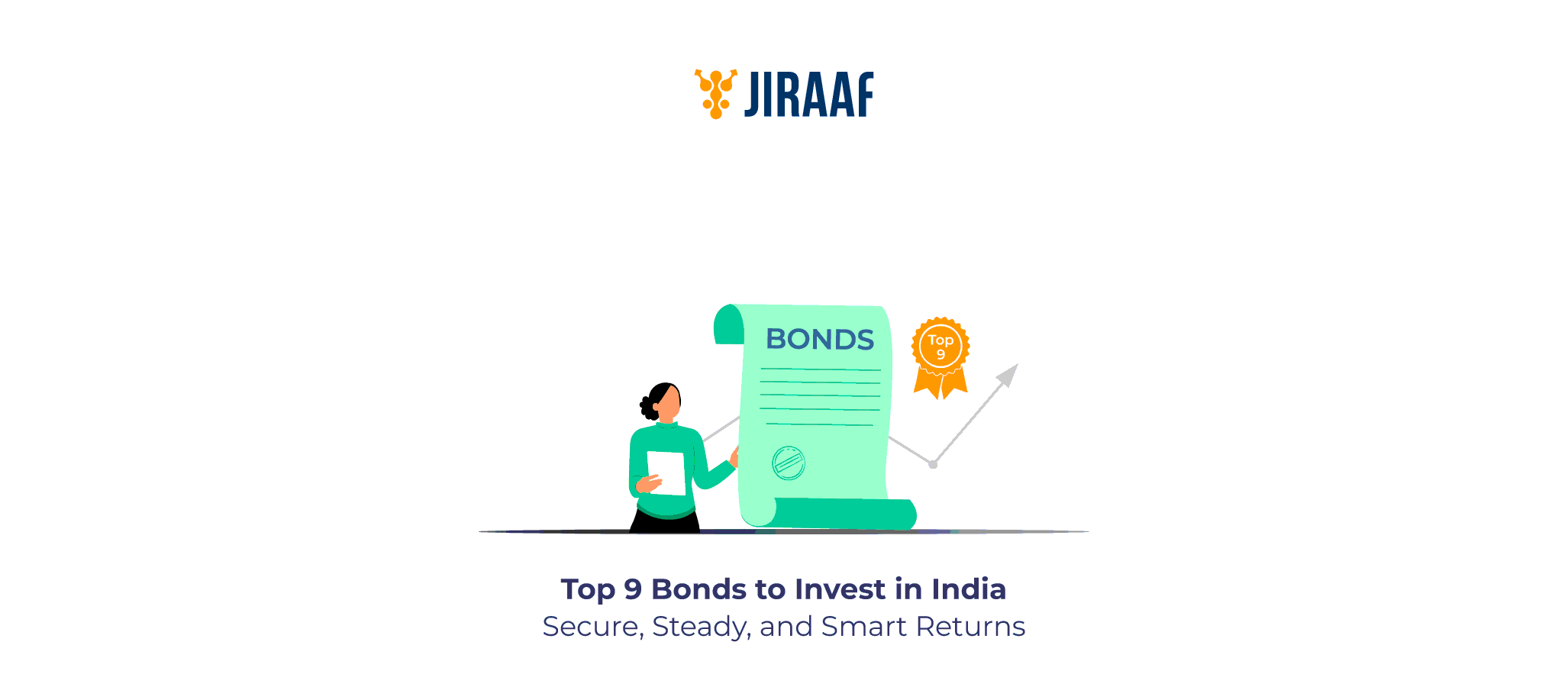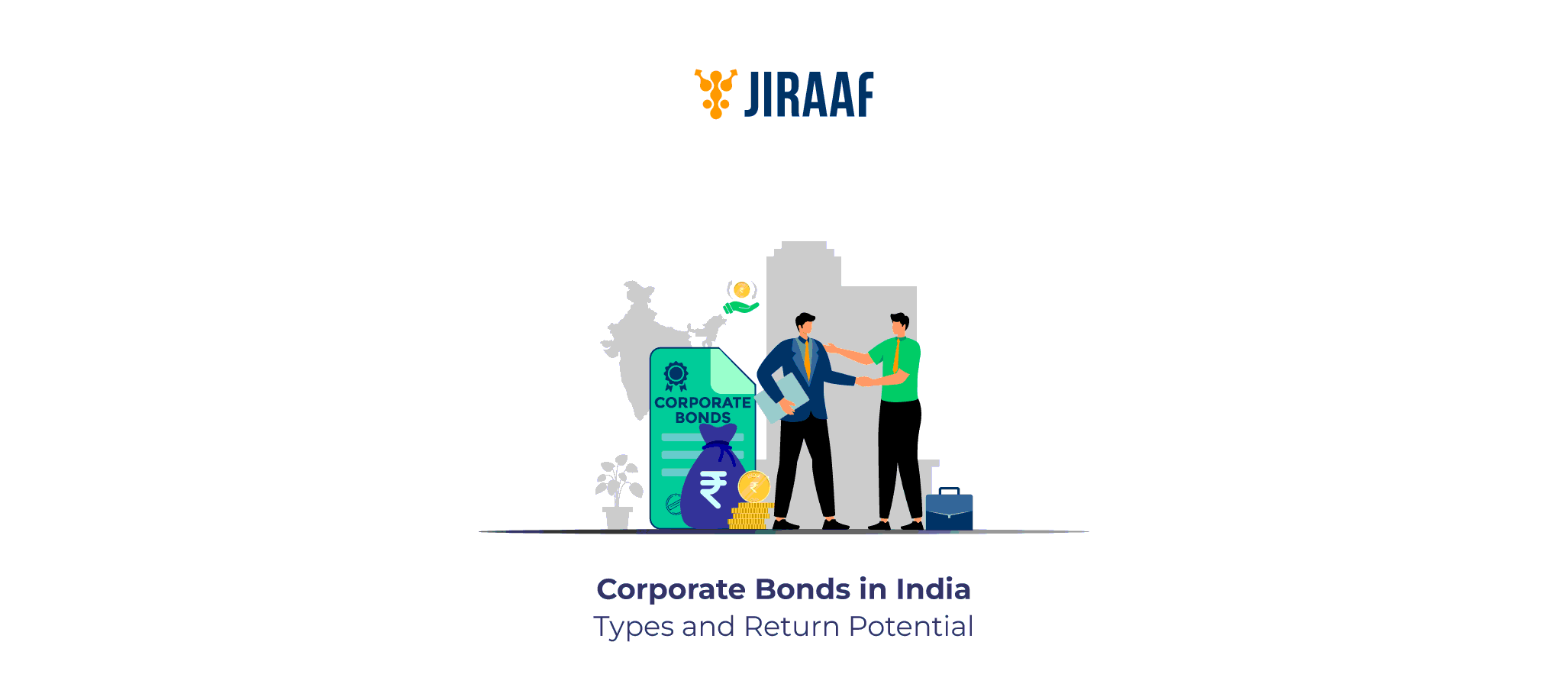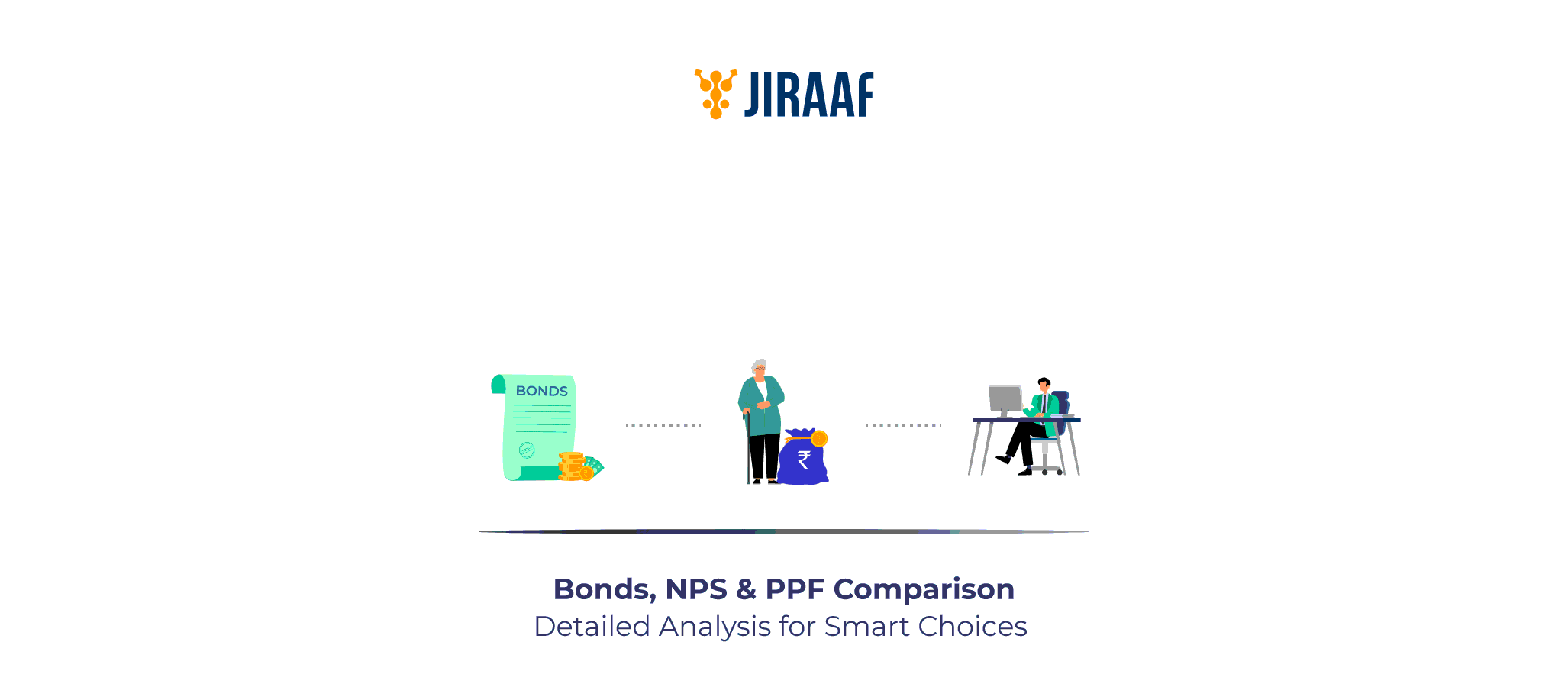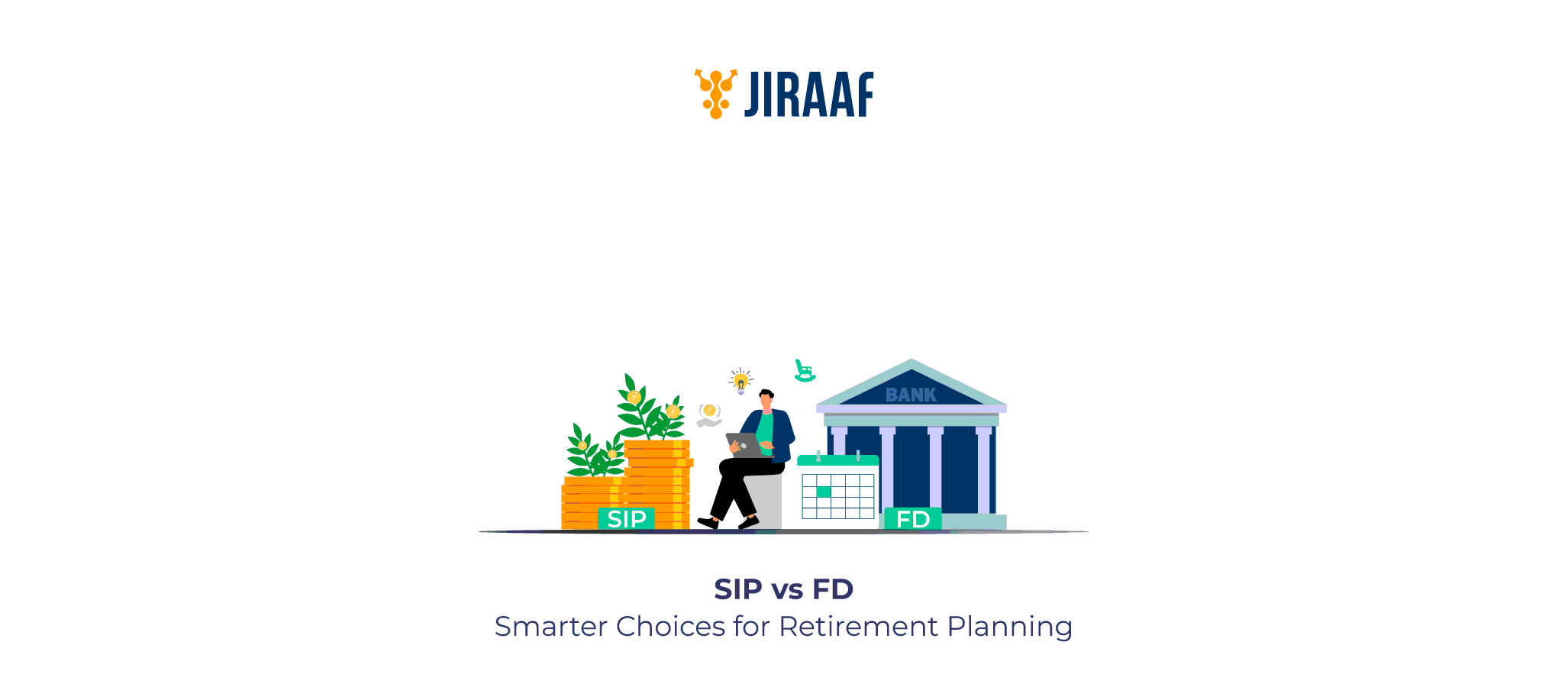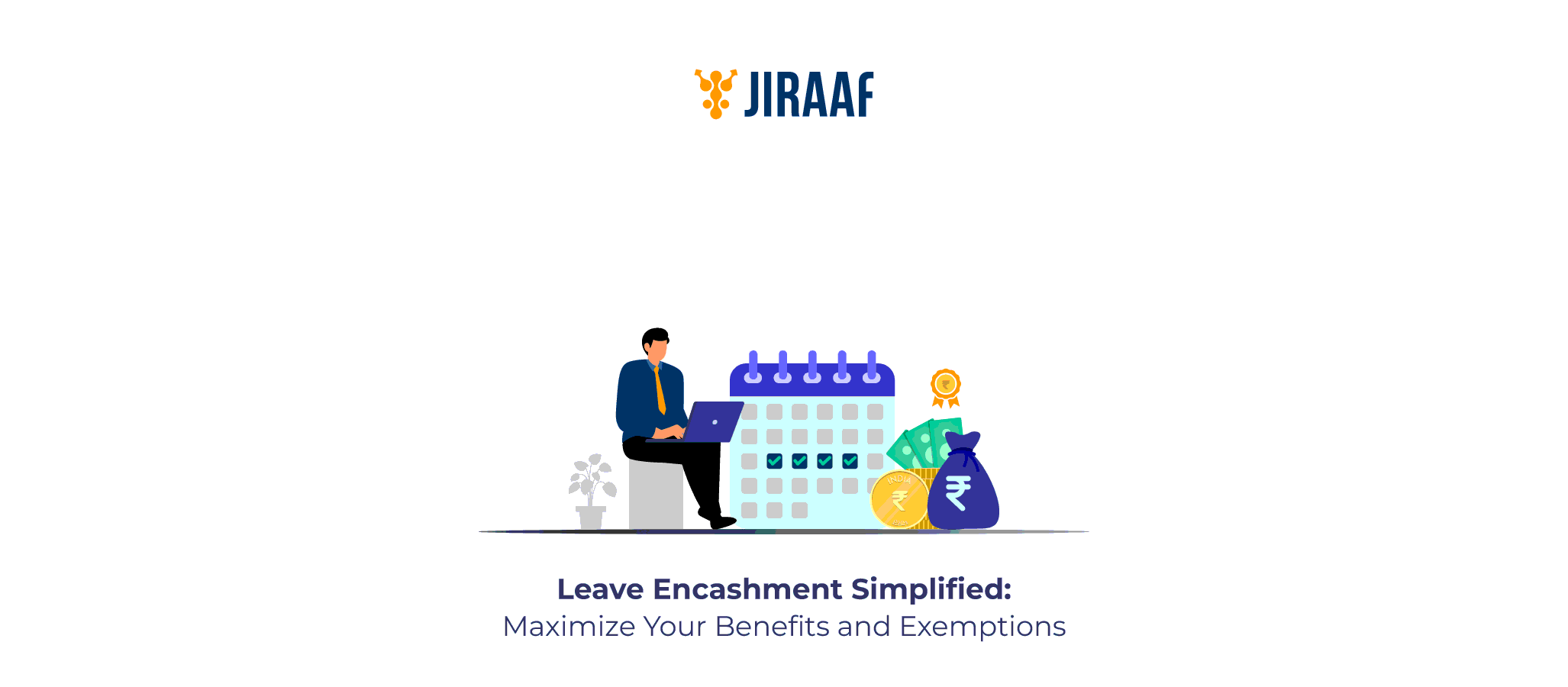Bonds are designed with specific purposes—some aim to preserve capital, others generate steady income, and a few deliver better long-term returns. Each bond serves a different type of investor, depending on risk appetite, financial goals, and time horizon.
In India, the bond market has evolved far beyond traditional government securities. Today, investors can choose from a wide range of options—from safe government and savings bonds to higher-yield corporate, municipal, and even gold-linked instruments.
This article explores nine key types of bonds available in India, outlining how each fits into different investor profiles. The list isn’t ranked but curated to help you understand where every bond stands on the risk–return spectrum, so you can align your portfolio with your comfort level and goals.
What are Bonds and Why Should You Invest in Them?
Bonds are a way to lend your money to governments, corporations, or financial institutions, and in return, receive regular interest payments along with the original amount you invested, at maturity. They offer a level of predictability and stability that stocks often cannot, making them an essential part of a balanced portfolio. If you are looking for a starting point that is both safe and reliable, government bonds are an ideal choice. They provide steady returns and act as a strong foundation for investors who want to grow their wealth without taking excessive risk.
Government Bonds: Safe and Reliable Investment
Government bonds form the backbone of low-risk investing in India. These instruments are fully backed by the central government, offering a high level of safety for your capital. Investors earn predictable returns in the range of 5.50-6.60% (As of Oct’ 25) and can trade these bonds in the secondary market for added flexibility.
They’re best suited for individuals who value capital protection and consistent income. However, because their returns are fixed, they may not always keep pace with inflation, which can limit real growth potential over long periods.
For those who want the same government-backed safety but with greater accessibility and ease of purchase, RBI Savings Bonds offer a practical next step.
RBI Savings Bonds: Guaranteed by the Government
RBI Savings Bonds carry the same government guarantee as traditional sovereign bonds but are designed to be easier for individual investors to access. You can purchase them in smaller denominations, starting from ₹1,000, making them suitable for anyone looking to earn safe and predictable returns without needing large sums to invest.
These bonds currently yield around 8.05% per annum (as of Oct ’25), with interest paid semi-annually. They are particularly suitable for conservative investors who value regular income, capital safety, and direct dealings with the Reserve Bank of India.
However, since their returns are fixed, they may not always keep pace with inflation. This limitation encourages investors seeking slightly higher yields to explore corporate bonds, which balance stability with stronger return potential.
Corporate Bonds: Higher Returns with Moderate Risk
Corporate bonds are issued by private or public sector companies to raise funds for expansion or operations. Depending on the issuer’s credit strength, yields range from 8% to 15%. Highly rated companies offer lower but stable returns, while smaller firms compensate for higher perceived risk with better yields.
These bonds work best for investors who can handle moderate risk and want to earn more than what government securities typically offer.
Jiraaf simplifies the selection process by curating bonds from financially sound issuers.
After evaluating options that balance income and safety, some investors look for tax efficiency—which leads naturally to tax-free bonds, combining stability with post-tax advantages.
Tax-free Bonds: Ideal for Long-term Investors
Issued by government-backed entities such as NHAI, PFC, and IRFC, tax-free bonds offer interest that is completely exempt from income tax. Yields typically range between 5 to 5.5% (as of Oct ’25), and while modest, the tax-free nature often results in better post-tax returns compared to taxable FDs or savings bonds.
These bonds are ideal for investors with a long-term horizon who want steady, predictable income without worrying about tax erosion. However, they have limited liquidity and long maturities, which means your capital remains tied up for extended periods.
For those seeking to earn from real economic impact, while still earning stable returns, municipal bonds become a natural next consideration.
Municipal Bonds: Supporting Infrastructure Growth
Municipal bonds are used to fund essential local projects like water systems, housing, or road development—letting investors earn from nation-building initiatives. They offer an average yield of 7.86% (as of Oct’ 25), with some carrying tax benefits, depending on the issue structure.
Since these bonds are tied to local governance rather than corporate performance, they provide diversification and social impact benefits. Investors who appreciate stability with purpose often see them as a meaningful middle ground.
However, those looking for asset-backed safety or a hedge against inflation may find Sovereign Gold Bonds (SGBs) a compelling next step.
Sovereign Gold Bonds: Invest in Gold Without Physical Holding
SGBs allow investors to benefit from gold’s price appreciation without the hassle of buying or storing physical gold. They also carried an annual interest of 2.5%, paid semi-annually, on top of the gold price gains.
These bonds are backed by the government of India, offering both safety and inflation protection—making them a smart diversification tool. Though new issues have been discontinued, existing series continue to trade in the secondary market.
For those looking to protect wealth directly from rising prices, the next instrument—inflation-indexed bonds—offers a more focused solution.
Inflation-Indexed Bonds: Hedge Against Rising Prices
Inflation-indexed bonds are structured to adjust both principal and interest in line with inflation rates. This ensures your investment’s real value is preserved even when prices rise.
They’re ideal for investors who prefer safety but don’t want inflation to silently erode their purchasing power. While slightly less liquid than other bonds, they guarantee real, inflation-adjusted growth—making them an important consideration for any long-term portfolio.
For those who want returns that rise with interest rate movements, floating rate bonds provide that flexibility.
Floating Rate Bonds: Protection Against Interest Rate Fluctuations
Floating-rate bonds have interest payments linked to benchmark rates such as the National Savings Certificate (NSC) rate or the RBI repo rate. This means when benchmark rates rise, the bond’s payout increases too.
They’re well-suited for investors who expect interest rates to climb and want to avoid being locked into lower fixed returns.
After understanding rate-linked investments, investors who also seek exposure to equity-like growth potential can explore convertible bonds.
Convertible Bonds: Dual Benefit of Debt and Equity
Convertible bonds begin as debt instruments but give investors the option to convert them into company shares after a set period. This provides a mix of steady interest income and potential upside if the company’s stock performs well.
They’re attractive for investors willing to take moderate to high risk in pursuit of higher long-term returns.
Having explored the full range—from government securities to corporate, gold, and convertible bonds—let’s look at a few quick tips to choose the right one for you.
How to Choose the Best Bond Investment in India
With so many bond options available, making the right choice comes down to clarity on your risk appetite, time horizon, and income needs.
Here’s how you can simplify your decision-making:
- Understand your risk profile: If you prefer safety and stability, government and RBI bonds are a great starting point. Investors comfortable with moderate risk can explore corporate or floating-rate bonds for higher potential returns.
- Match your investment tenure with your goals: Long-term investors looking for consistent income can consider tax-free or inflation-linked bonds, while short-term needs may be better served by fixed deposits or RBI bonds.
- Check the credit rating: Always look into who is issuing the bond. Higher-rated issuers generally mean lower chances of default and more predictable returns.
- Factor in taxation: Some bonds, such as tax-free bonds and sovereign gold bonds, can help you improve your post-tax returns and make your investments more efficient.
- Consider liquidity needs: Not all bonds are easy to exit. Corporate and government securities usually offer better tradability compared to long-term or tax-free bonds.
- Diversify smartly: A balanced mix of safe and moderately risky bonds helps protect your capital while still offering steady growth.
Conclusion: Building a Safe and Balanced Bond Portfolio
Choosing the right bond isn’t about chasing the highest yield, rather, it’s about aligning your investments with your goals, time frame, and comfort with risk.
If you’re unsure where to begin, start with safer options like government or RBI bonds and gradually explore higher-yield instruments such as corporate or tax-free bonds as your confidence grows. Diversifying across a few types can help you manage risks while maintaining steady returns.
Since every investor’s financial situation is different, it’s wise to consult a certified financial advisor before making your final choices. The right mix of bonds can create a strong foundation for wealth that grows securely and steadily over the years.
